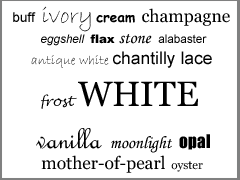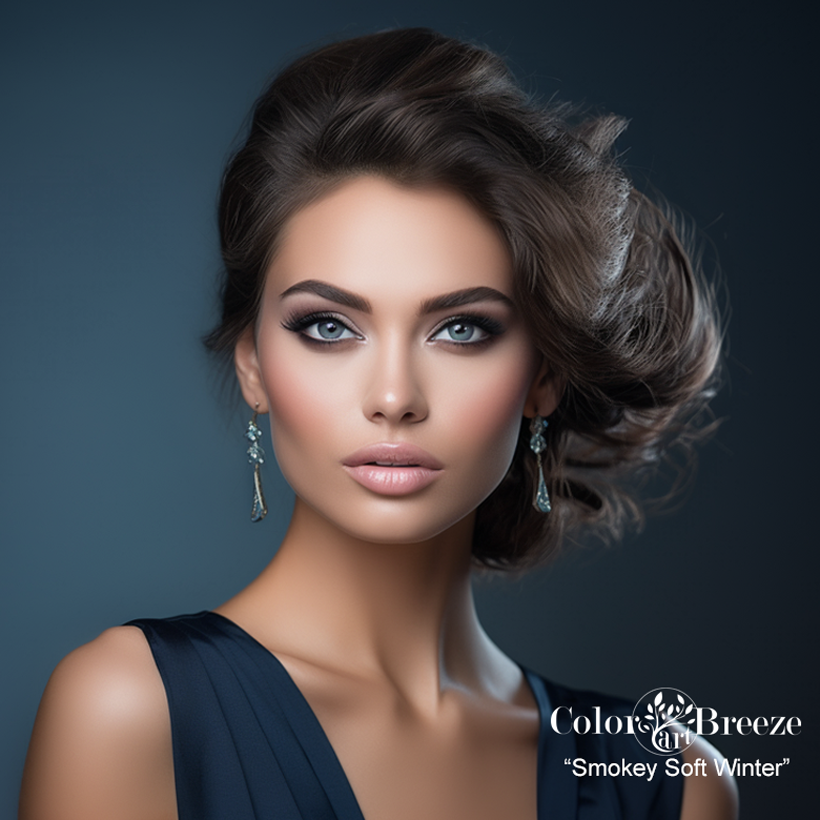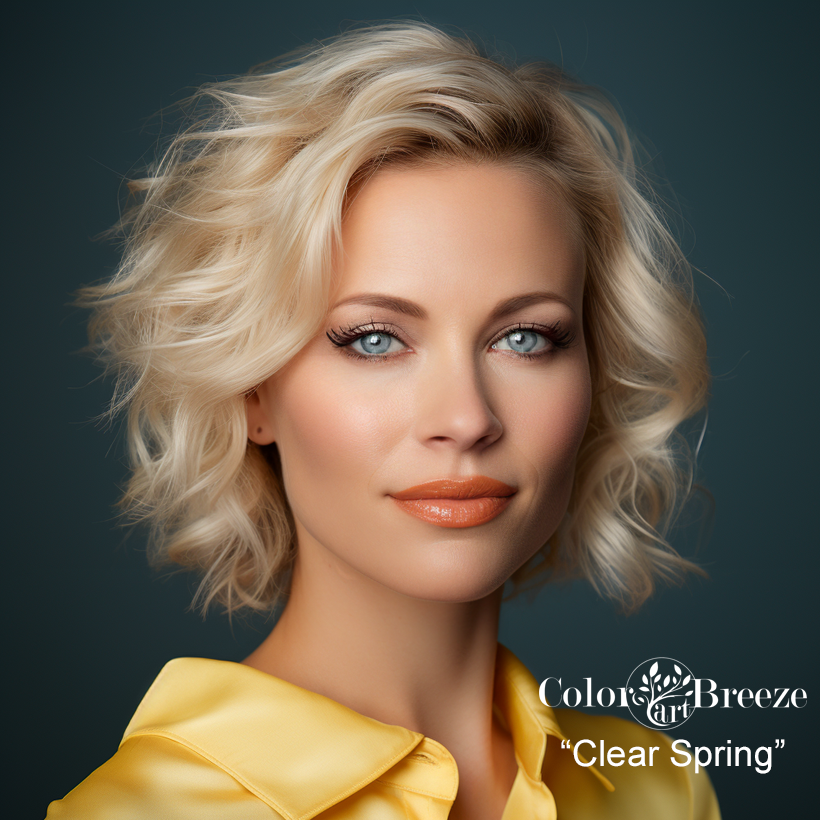Color Psychology
Color psychology is the study of how colors have an effect on human behavior
In general, certain colors can have a specific psychological effect on us. Some can even have physiological effects. The study of it is long and fascinating.
Find out the some psychology basics for each color below.
Take them into consideration when you choose your next outfit for a certain event. Keep in mind, however, that psychological effects can be different in different countries and cultures. You can learn more about Color Psychology here.
So how does Color Psychology play into Color Analysis?
If you want to wear a certain color for its psychological effect, like Green, for example, you will want to choose the best version of it to flatter your coloring. For example, Summers would choose cool greens, Autumns choose earthy moss greens, Springs want light warm greens, and Winters choose emerald greens.

The color psychology of Black is that of authority and power. It is a favorite in fashion, of course, because it makes people appear thinner. It is also stylish and timeless. "The Little Black Dress" is a classic in and of itself. However, Black, as with most colors, can have both positive and negative connotations.
Positive: Classic, formal, powerful, mysterious, sexy.
Negative: Mournful, unimaginative, rebellious.
Tips:
• Black has a life of its own. Though it can be slimming, it can also be overpowering. Make sure it's the right situation for a black outfit.
• Black is a power color for all Winters, especially the Deep Winter. If you are not one of these seasons, then it's best to wear Black away from the face. If you must wear a black top and it's not one of your power colors, try to wear a scarf in one of your best colors. A seasonal colored blouse will help offset a black jacket.
• Always make sure your makeup is in your seasonal colors, regardless of whether you are wearing clothes in your power colors or not.

The color White symbolizes innocence and purity. White is often worn in the summer to help stay cool by reflecting light. White is popular in fashion because it is light, neutral, and goes with everything.
However, white shows dirt and is, therefore, more challenging to keep clean than other colors. Doctors and nurses wear white to imply sterility and cleanliness. Ever notice some salespeople at cosmetics counters wearing a white lab coat? It makes them appear more like a medical professional when, in fact, they are generally just salespeople.
Positive: Clean, fresh, innocent, progressive.
Negative: Cold, colorless, sterile.
Tips:
• Pure white is a power color only for Winters. Everyone else is flattered by a soft white.
• If you are a warm season, ivory is an even better choice.
• White and variations of it look great in the summertime. Everything lightens up in the summer.

Blue is one of the most popular colors. It causes the opposite reaction as red.
Peaceful, tranquil blue causes the body to produce calming chemicals, so it's frequently used in bedrooms. It's often recommended to wear blue to job interviews because it symbolizes loyalty. People are more productive in blue rooms. Studies show weightlifters are able to handle heavier weights in blue gyms. Blue can also be cold and depressing.
Positive: Stability, intelligence, trustworthy, peaceful.
Negative: Conservative, predictable, stodgy, unemotional.
Tips:
• Blue is an important color in the business world. Think "Corporate Blue." As with Black, if you must wear a strong blue for business, and it's not one of your power colors, soften it with a blouse or scarf in one of your seasonal colors.
• Blue, as most colors do, have many variations. Sapphire blues and strong True Blues are best for Winters or those with the bold coloring to handle them.
• The softer blues are always found in the Summer Palettes.
• There are warmer blues such as turquoise and teal for the Warm seasons.

The color Red is the most emotionally intense color, the first to get noticed. Science has proven that Red stimulates a faster heartbeat and breathing.
Red cars are stolen more often than other colors. Red clothing gets noticed, and it's especially useful in attracting the opposite sex, think "the woman in red."
Positive: Exciting, confident, sexy, assertive.
Negative: Aggressive, threatening. dangerous
Tips:
• Be careful if you're concerned about your weight: Red can make one appear heavier.
• Red is very powerful, so it's best to use it in smaller doses in most situations.
• Wear only when you really want to stand out, not when you want to appear as "one of the team."
• There are endless variations of Red. Click here to see the specific red shades that are best for each season.

Like the color yellow, Orange is an attention-getter, it's stimulating and energetic.
It draws ones attention (think of traffic signs). It's unusual and creative, and also refreshing (look at all of the fruits associated with Orange).
Positive: Cheerful, warm, lively, approachable.
Negative: Cheap, insincere, informal.
Tips:
• Like Red, it's best used as accents. Too much can be too overpowering.
• However, if you want to be noticed and stand out in a crowd, Orange is a good color for that.
• Warm seasons wear Orange best.
• Springs look alive in all shades of Orange as long as it is clear and saturated.
• Autumns look great in Orange, too, but theirs must be muted, such as pumpkin, burnt orange, richer orange-based colors like rust, spice, etc.

The color green is calming and refreshing. It symbolizes nature, representing life, growth, and renewal.
Dark green is masculine, conservative, and implies wealth. It's steady, dependable, and harmonious, with its perfect balance of warm Yellow and cool Blue.
Positive: Nurturing, healthy, down-to-earth, organic.
Negative: Predictable, boring, inexperience.
Tips:
• Not the best color if you want to stand out in the crowd.
• Depending on the amount of yellow or blue, green can either warm or cool.
Click here for tips on how to wear green for each season.

The color Pink is the softer, sweeter side of RED. Where Red stirs up passions, pink calms them down. Studies have shown this to true.
In fact, sports teams sometimes paint the locker rooms used by opposing teams bright Pink so their opponents will lose energy.
Pink is considered a "feminine" color, soft and delicate.
Positive: Feminine, innocent, romantic, non-threatening.
Negative: Weak, powerless, not taken seriously.
Tips:
Wear pink when you want to appear safe and non-threatening to someone or to conjure up sympathy for your cause.
• Rethink wearing pink to a job interview or an important business meeting if you want to be taken seriously.
• Pink can be paired with black or grey to give it more sophistication.
• Pure Pink is prominent in Summer palettes. But intense Hot Pinks are powerful for Winters and Clear Springs, as are icy pinks.
•Warm seasons need to be careful to wear only warm pinks.

A favorite of royalty, the color purple connotes luxury, wealth, and sophistication.
It is also feminine and romantic. However, because it is somewhat rare in nature, Purple can appear artificial.
Positive: Sensitive, creative, mysterious, noble, luxurious.
Negative: Impractical, non-conforming, immature.
Tips:
• Purple is an excellent color for you if you are in an artistic, creative environment. But in a business environment, it may appear to be too individualistic and not a team player. Use in smaller doses in that situation.
• Deep intense Purples suggest power and wealth; lighter, more pastel purples are considered softer and more delicate.
• Likewise, intense Purples are best for Winters and cool Summers with stronger coloring. Most summers look good in most shades of Purple.
• Did you know that Purple is one of those "universal colors" that EVERYONE looks good in? But it has to be pure Purple: not lavender, not fuchsia, not grape, not violet.

The color yellow is an attention-getter. It's sunny and cheery. While it is considered an optimistic color, studies have shown that people lose their tempers more often in yellow rooms, and babies will cry more.
It's the most difficult color for the eye to take in, so it can be overpowering if overused. Yellow enhances concentration, hence its use for legal pads and sticky note pads. It also stimulates the appetite. It's no coincidence that McDonald's restaurants' arches are golden.
Positive: Sunny, Cheerful, hopeful, lively.
Negative: Impulsive, frivolous, irresponsible.
Tips:
• Like Red, it's best used as accents. Too much can be too overpowering.
• However, if you want to be noticed and stand out in a crowd, yellow will make that happen.
• Yellow is a warm color. There is only ONE color of yellow that a cool summer will look good in, and that is a light lemon yellow. No golden yellows for cool seasons!
Click here for more tips on how to wear Yellow.
Return to Home page


